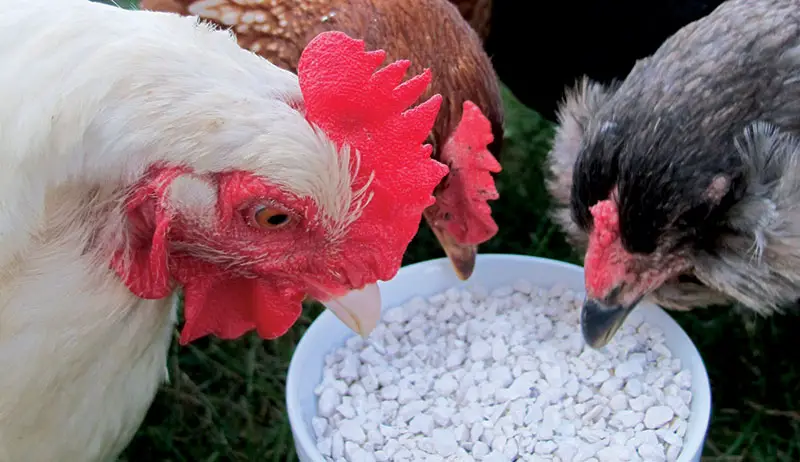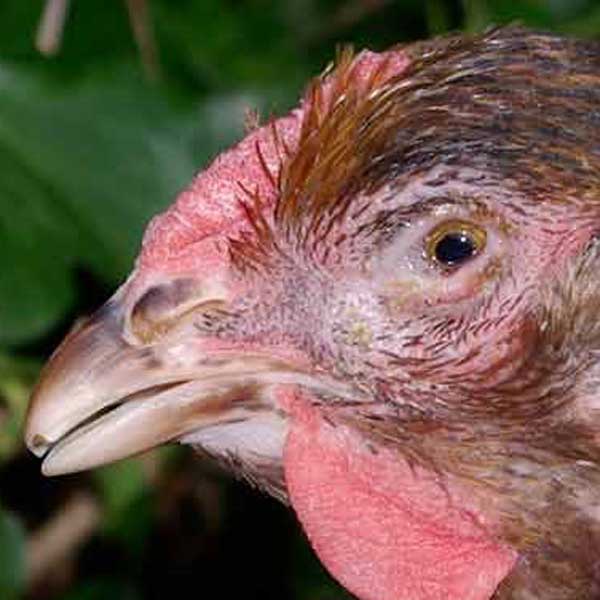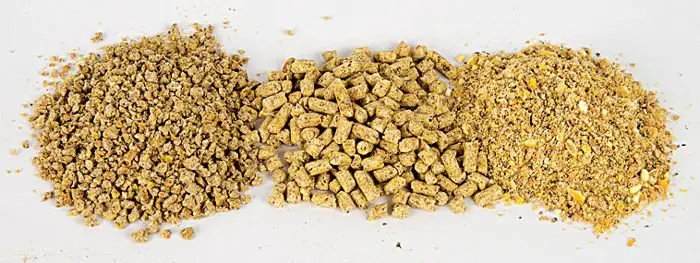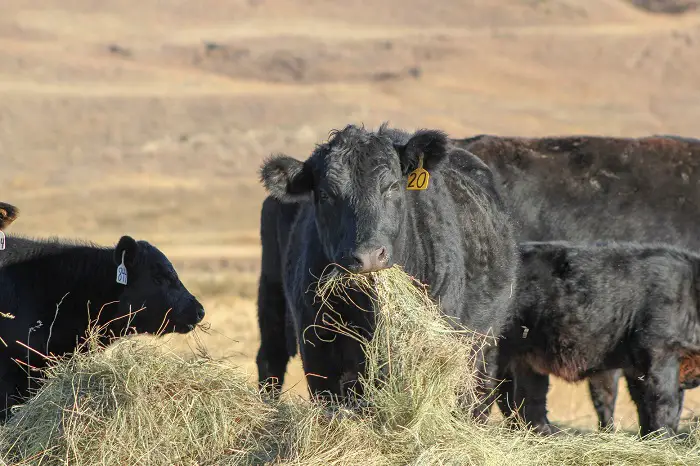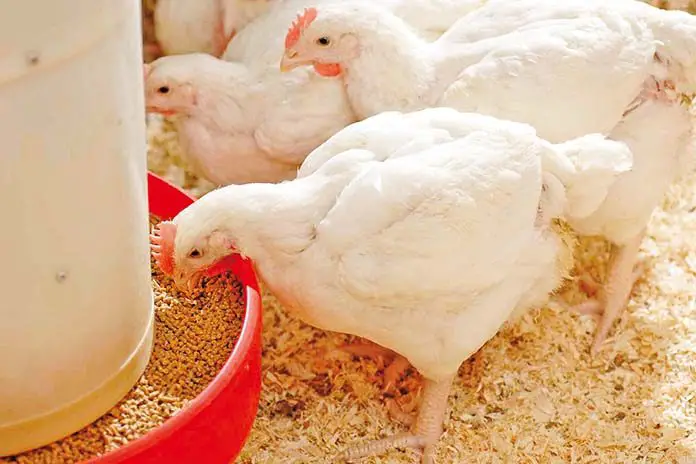Oyster shells are the shell remains of oysters, harvested from the sea or landmasses that used to be part of the sea. It seems odd that something from the sea would be recommended feeding for chickens which are domesticated not marine creatures, chickens will not even swim in ponds even when kept together with ducks. How oyster shells find themselves as part of chicken feed is that they are very rich in calcium, a mineral required for normal bone development but more importantly egg production. Oyster shells will mostly be fed as a supplement to laying chicken feed, but there is no harm in feeding it to other classes of poultry as the chickens will eat to appetite.
Contents
Typical Analysis of Oyster Shells
Below is a typical analysis of washed oyster shells normally available for sale in feed shops to supplement laying chickens. It’s very important when buying oyster shells for chickens to ensure that they are clean and free of foreign objects like soil as these might reduce the calcium content. Oyster shells are fed to chickens for their calcium content, so this is very important otherwise it would be a waste of resources to feed poor quality oyster shells. Egg shells are mostly made out of calcium carbonate and oyster shells for chickens are an excellent source. Oyster shells, apart from providing calcium for the chickens is also a soluble grit source, which aids digestion in the gizzard.
| Nutrient | Min/Max | Percentage |
| Calcium | Min | 36% |
| Calcium | Max | 41% |
Calcium Requirements for Chickens
An adult laying hen will need about 4-5g of calcium daily to be able to sustain normal egg production, each eggshell will contain about 2 grams of calcium. In order to form this eggshell laying hens draw the calcium from their own bones. In the wild, chickens used to get their total calcium requirements from eating insects, grubs, and egg and/or bone fragments. Under commercial settings, this is no longer available and even if they were reared outside the chickens would not be able to get enough calcium this way. Most commercial feeds for chickens will be formulated with enough calcium in the form of limestone powder or grit to sustain normal production. Research has, however, shown that supplementing chickens with oyster shells has been proven to be beneficial to the chickens, especially in situations of stress or high productivity. Chickens have a special bone, the medullary bone, which they use to store any excess calcium in their body, so the requirement for calcium hence oyster shell consumption tends also to vary depending on the chickens’ current needs and available stored quantity. The best supplement that can complement the calcium already in the diet for chickens is oyster shells.
Chickens deficient of calcium can develop problematic behaviors like perking each other and egg eating to try and meet their calcium requirements, this can lead to loses in the productivity of the flock.
When feeding chickens in a mixed flock, laying hens are most likely to benefit from oyster shells as the extra calcium will:
- Reduce soft shelled eggs
- Broken bones due to low calcium
- Improve blood circulation and immune system
- Improve flock fertility
When and How to Feed Oyster Shells to Chickens
Chickens will always eat to satisfy a nutrient need in their bodies so the intake of oyster shells will depend on the calcium requirement of the chicken. As discussed before, there is no harm in feeding oyster shells to all types of chickens as they will only consume what they need to meet their calcium requirements. So oyster shells can be fed to chickens free access or ad lib in a trough in the chicken house, some farmer will scatter the oyster shell in late afternoon to provide calcium for the egg forming to the next morning. It is best practice to avail oyster shells for chickens all year round for them to maintain egg production and bone strength. Even if the hens are not laying feeding oyster shells will help them store calcium in their bones ahead of the next laying cycle. This practice also indirectly improves the fertility of the chicken flock by encouraging socializing of the hens and rooster chickens as they pick up the oyster shells.
Oyster shells vs Calcium Grits
As mentioned before oyster shells can act as a source of soluble grit in chickens, however, this should not be confused with normal chicken or calcium grits sold for supplementing chickens. These grits are mostly washed sand and hence insoluble and are fed to chickens to help grind feed in the gizzard, this is a natural adaptation as chickens do not have teeth to break down the food they eat. For this reason, the feeding of oyster shells to chickens should not replace insoluble grit as it’s still required by the chickens to aid digestion.
Alternatives Sources of Calcium
In commercial feeds most of the calcium comes from limestone but, the individual farmer can also use a variety of feeds to supply calcium in place of oyster shells. Some of the alternatives include but are not limited to:
- Dried and crushed eggshells, it is recommended to cook or dry chicken eggshells before feeding them to chickens to avoid them developing a habit of eating their own eggs. The chickens should not recognize that they are being fed chicken eggs, they will associate this as a source of calcium and go for them as soon as they have a deficiency.
- Greens and common vegetables, most brassicas like kale, spinach, and cabbage are good sources of calcium. Alfalfa is also a good source and most of these have the added benefit of boosting the egg yolk color due to pigments in their leaves.
The feeding of oyster shells to chickens is a good practice especially for laying chickens as the chickens will produce more eggs, improving also the health and well-being of the whole flock. The chickens should always have access to oyster shells at all times so that they can consume what they require to meet their calcium requirements.
